Ten years ago, my girlfriend and photographer extrodinair - Brooke - and I put together a book titled "Homesteads of the Mighty Murray"..... It was a journey down Australia's Murray River exploring 12 of the diverse historic homseteads to be found established upon the rivers prosperous banks. Sadly, as is the case with so many would be authors, no publisher took the opportunity to publish this wonderful book.....although I did notice one of the publishers produced a strikingly similar book 5 years after I had pitched them the idea. Hmmmmmm, I am convinced it's not what you know, but who you know in the publishing game !!!!
Now with the wonders of online publishing, I want to take the opportunity this year to share my book with the world. Over the next 12 months I will be posting each of the chapters of my book, one a month. I do hope you enjoy this little bit of insight into my portion of the world, it's history, it's beauty and it's story......
Homesteads of the Murray - Introduction....
As a wide eyed, child I vividly remember cuddling into my Poppa Micks lap and begging for one of his many stories. To my little girls keen nose he always had the captivating scent of freshly rolled tobacco about him. At least, he did until he gave up smoking. There was always the contented feeling of coming home in Poppa Micks cuddles. He was a tremendous storyteller, as both young and old alike could attest to. And he would never fail to bring out the pride of his story-telling catalogue for his grandchildren – the day he swam the Murray with a billy full of pups. As the story grew older, and our childish adoration expanded, Poppa Mick would embellish it until at last he was swimming a raging, flood swelled river with the writhing billy full of yelping pups held between clenched teeth. It was a fine old story !
I don’t doubt that Poppa Mick loved that great old river. He certainly gave his grandchildren a love for it. Many a day he took us into the bush by the murky yellow depths and fished for hours on end, while we played under the river gums. He would dig up witchity grubs and tell us they were for lunch, while we thankfully tucked into Nanna Alice’s tomato sandwiches instead. And when at last we fishermen were all fished out, we would head home for Nanna to cook us up a tea made from our bounty. For most river children like me, this was their blissful childhood.
I was always warned about getting to close to the river and falling in. The river was dangerous for a little girl, and the reserved fear of the river has never really left me, making it’s snaking bends and coves all the more rich with mystery, adventure and allure. Even today when I swim at her sandbars, there is a wariness inside. I recall all the stories of people who have been tragically drowned in her waters. People who have been sucked into one of her powerful whirlpools, even tales of sections of the river where streams of water run deep underground, re-surfacing kilometres downstream. The river is an enticing enigma with an air of untamable power – despite all the weirs and locks to the contrary. She demands to be treated with respect.
In places it dawdles, sluggish and heavy with mud after torrential rains. Yet high in the mountains where it’s life begins, it sprightly dances, clear and sparkling as diamonds. Running for 2530km from North Eastern Victoria to the South Australian coast, the Murray River is one of the longest navigatable rivers in the world. For centuries it has given life to the peoples of this dry continent.
The native river dwelling people found the Murray a dependable source of food, abounding in fish and drawing wildlife to its lush grassy banks. The gums that flourished upon the rivers side gave up their bark for use in canoes and dwellings. The tribes of the Murray valleys and plains blessed by the rivers wealth in food shelter and transport.
In the 1840’s and 50’s, white settlers too succumbed to the Murrays magic. This seemingly reliable water source drew visionary men and women to establish immense estates, or “runs” along the steep banks. Cattle and sheep now grazed on the riverland grasses alongside kangaroos and emus. Primitive homesteads and foundling communities were set up, benefiting from the plentiful wood for shelter, just as their native brothers and sisters did.
As settlement grew, homesteads were exchanged for gracious riverland mansions, and community spirit ran high. Work in rural Australia was plentiful for those who were willing and able. At the turn of the 20th century 44% of Australians lived in rural areas, and so, humming with people, growth and prosperity, the Murray river region was firmly established as a vital agricultural region for newly federated Australia.
Australia’s renown as the country that rode on the sheep’s back was due in no small measure to the gift of water from the Murray. Wool clips were transported from pastoral stations to inland ports, destined for markets in Melbourne and Adelaide via that now romantic element of steam travel – paddleboats. Farmers in the heyday of river travel were able to tell exactly which steamer was puffing up the river to their landing long before the wooden boat actually came into view. The tone of the "toot toot" from the steamers whistle would announce their imminent arrival.
Like river transportation, irrigation too came as a tremendous boost to the economy of a fledgling nation. Irrigation farms sprang up like wildflowers after spring rains. Orange groves, apple, pear and peach orchards, dairy farms, rice cropping and viticulture – all an impossibility before the waters of the Murray afforded the people of the river such reward.
The pastoral stations of the Murray have also united the cultures of the various settlers along the river. The natives of each region rubbed shoulders in the workplace with the Chinese, Italians, Americans, Tongan and Polynesians, and the English, Welsh, Scottish and Irish from the earliest days of settlement. Throughout the years these people have transformed the Murray region into the vibrant smattering of cultures and heritage that we see before us today.
What a blessing this river has been, rising grandly in the rush and gurgle of mountain streams, and winding it’s way through valley floors laden with ferns and greenery, out into the open country of the plains, rolling along still, under the fire of mallee stars. To me there is perhaps nothing quite so thrillingly Australian as the sight of a river gum in all its aged splendour of mottled bark and gnarled limbs. As it cascades its branches across its watery lifesource, there in is a sight give pride to any child of Australia.
I am a product of five generations of Australian farmers and as such, the love of the Australian rural lifestyle – especially in the river country – is something I cannot escape from, and would not want to. This book is about the sentiment within me, and so many Australians just like me, who stand with pride in our rural heritage. The beauty of our rural land, not only in its landscape, but in it’s stories and it’s people.
Each of the properties depicted in “Homesteads of the Murray” have achieved what most people in the country dream of realising – victory over the tremendous odds that are against each one who sets out to make a successful living off the land. Some properties may be battle scarred (giving them the greater story to tell!), but in today’s uncertain farming environment, they are winners. As winners, throughout the 200 odd years of white settlement, many of these properties have been able to display the trophies of their success though the establishment of their homesteads. A goldmine of architectural history lies hidden all along the rivers banks, the existence of which is sometimes not even known to locals. But they are there, preserving a taste of our prosperous past. Everything from a drop log cabin to a sprawling two-storied mansion can be found tucked away amongst the river gums.
The stations represented here are all one in their dependence on the river for survival. Today it is in the provision of irrigation water to a dry land. At one time, it was in the use of the river as a transportation link for wool clips and supplies. All claim a tie to the river, and without her, the properties may have simply faded into oblivion.
This is a book that relives the past and glories in the beauty of that bygone era of gracious country estates and honest reward for hard work. It shows us where we have come from, who we are today and how the humble contribution of those before us has changed our lives. Here is the preciousness of our settlement from the mountains to the mallee.
So journey with me if you will, down the meandering Murray, catching a glimpse of the stations of this mighty river, as it sojourns through the nation. Behold the impact that men and women have made as they carved their dwellings out of a courageous life on the land. Enjoy the beauty that God and men have created hand in hand. Sense the struggle and the heartaches that wrung the very core of the bold residents of the river. In honour of the colourful pasts of these jewels of the Murray, the river pastoral stations of our land deserve this, the following tribute.








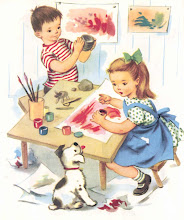
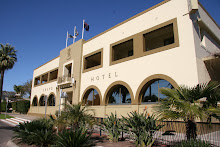
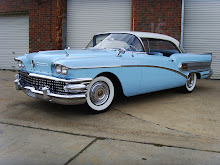





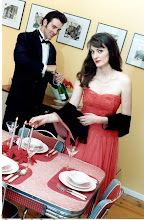











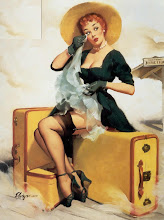
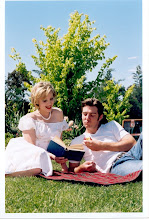
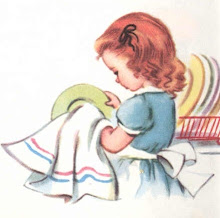































Oh Sen and Brooke, I've always wondered what you would do with your beautiful book. What a super idea to publish it here. I'm so excited to finally see it in its entirety.
ReplyDeleteWonderful! I've swam in and seen the Murray as I went from Melbourne up to Red Cliffs just outside Mildura for a month or so. Picked and packed oranges there and found way too many amazing vintage things I wasn't able to buy!
ReplyDeleteOh, just superb! Thanks for sharing.
ReplyDeleteI was born about 100 yards from the Murray River more than 60 yrs ago, and have lived in North West NSW, then NSW central coast, but always held the dream to retire closer to the Murray, which we have done after a 40 year absence. There is nothing quite like the smell of the River Red gums on a hot day along the riverbanks of the Murray and its tributaries; we know we have finally returned home.
Oh Sen, was that TEN YEARS ago, how time does fly??? How nice to read these again....sounds like you inherited your 'Poppa Micks' talent for story telling...Honestly..your descriptive writing is so so evocative!! Brooke
ReplyDelete